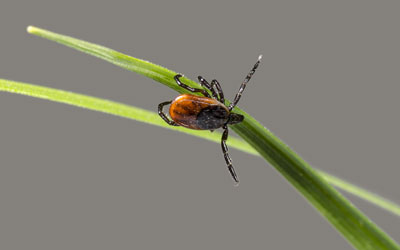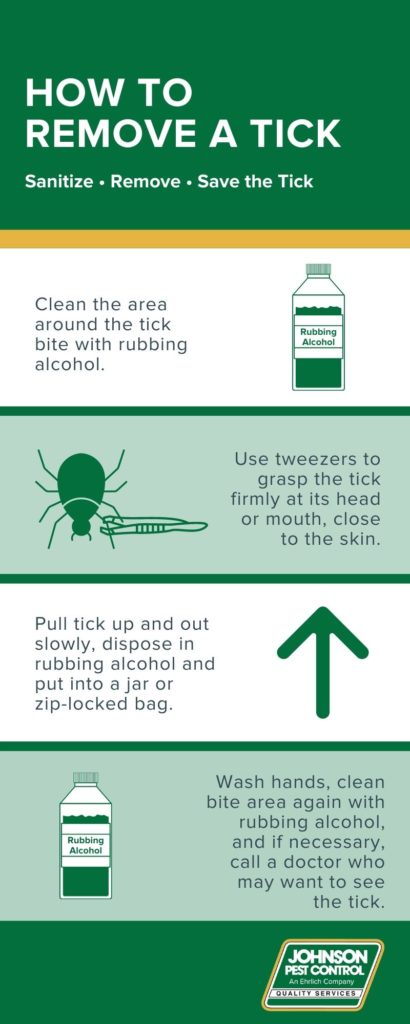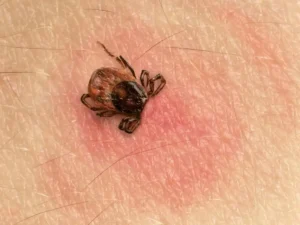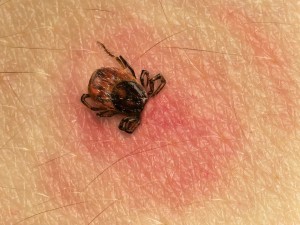 Are you fed up with the never-ending battle against ticks? Do you want to keep these blood-sucking parasites off your dog permanently? The experts at Johnson Pest Control have you covered. Read on to learn our top tick-fighting tricks to keep your furry friends safe all summer long.
Are you fed up with the never-ending battle against ticks? Do you want to keep these blood-sucking parasites off your dog permanently? The experts at Johnson Pest Control have you covered. Read on to learn our top tick-fighting tricks to keep your furry friends safe all summer long.
Why Flea and Tick Prevention for Dogs Is Crucial
Ticks may be small, but their impact on your beloved pup’s well-being is huge. From the potentially severe Lyme disease to other tick-borne nightmares, these tiny insects can wreak havoc on your dog’s health. Taking a few steps to protect your pets could save them – and you – a lot of trouble and discomfort.
Check Your Dog for Ticks Daily
Any time you go outdoors, take a few minutes to check your pup’s fur for ticks. Comb through their skin, investigating every nook and cranny, from ears to neck, belly to legs. If you stumble upon an unwelcome tick, it is eviction time. Grab your trusty tweezers or a nifty tick remover tool, and give those pesky intruders a one-way ticket out.
Avoid Ticks When Possible
Do not let your dog wander into tick territory. Ticks lurk in tall grass, bushes, and leaf litter, ready to pounce on any passing host. Stick to well-groomed trails and paths. Keep your lawn neat. Mow it regularly and clear any debris to make your property less attractive to these tiny pests.
Bathe Your Dogs Regularly
Bath time can be a tick-busting blast. Grab a mild shampoo for dogs and lather up your pup. Rinse them well and look for any ticks. You can also add some apple cider vinegar or lemon juice to the water, which act as natural tick repellents.
Invest in a Tick-Proof Dog Vest
Trendsetting pups, listen up! Suit up in style and outsmart those ticks. Meet the tick-fighting superhero costume: the dog vest. It covers your dog’s chest and back, blocking tick bites. Some vests have tick-slaying permethrin for extra protection. Your furry friend will be tick-free and fashionable.
Ask Your Veterinarian
Your vet is the best resource for flea and tick prevention in dogs. Chat with them to find out how to keep those parasites away. They will suggest products and methods for your dog’s needs. The options include collars, sprays, drops, pills, and vaccines. But always check with your vet for the best flea and tick prevention for dogs in Tennessee.
Professional Tick Extermination and Prevention
When the tick situation feels overwhelming and it seems like these tiny pests have taken over your property, it is time to call the pros. Enter the tick-busting professionals Johnson Pest Control! Their expertise and cutting-edge techniques will give those ticks a one-way ticket out of your furry friend’s life. Not only do they provide exceptional service, but they are also renowned for their commitment to eco-friendly pest control solutions and unwavering dedication to customer satisfaction.
Do not let ticks ruin your day or harm your dog’s health. Take action now! Call Johnson Pest Control today and bid farewell to those pesky parasites. Your dog deserves a tick-free adventure in the beautiful state of Tennessee.
 Ticks are one of the most common spring and summertime pests in Tennessee. They’re also one of the most dangerous. Ticks are infamous for transmitting a number of diseases, including Lyme disease. While getting Lyme disease is rare, it can happen when an infected tick is embedded in someone’s skin for upwards of two days. This makes it essential to learn how to safely remove ticks when they bite you or a family member.
Ticks are one of the most common spring and summertime pests in Tennessee. They’re also one of the most dangerous. Ticks are infamous for transmitting a number of diseases, including Lyme disease. While getting Lyme disease is rare, it can happen when an infected tick is embedded in someone’s skin for upwards of two days. This makes it essential to learn how to safely remove ticks when they bite you or a family member. How Can I Remove a Tick?
How Can I Remove a Tick?
 There are a lot of bugs out there that can bite you (or sting) but what bug bites do you need to be concerned about the most?
There are a lot of bugs out there that can bite you (or sting) but what bug bites do you need to be concerned about the most?